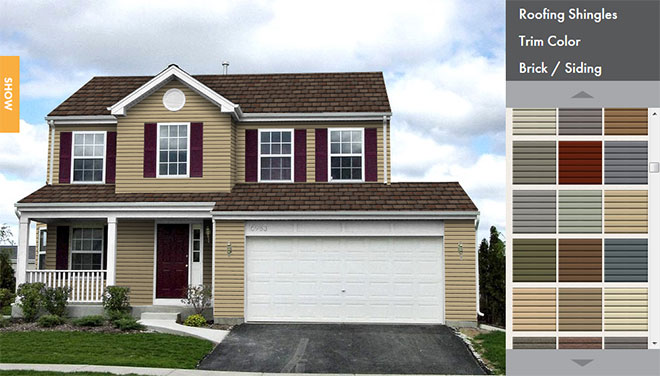Minnesota Commercial Flat Roof Contractor MN
By this time of year in Minnesota, there have been several severe storms. Some of these storms have contained damaging hail.
Roofing contractors know that all leaks are not created equal. But to most building owners and managers, a leak is a leak. At the first sign of water in a building, your immediate response may be to call your roofing contractor. In most instances, this is a good step to take – and the sooner the better. But the fact of the matter is that water enters a building in many ways and may not actually result from a roof leak. Sometimes the moisture doesn’t come in from the roof at all – it may have been right there inside your building all along.
One common source of leaks that appear to be roof-related (but aren’t) is rooftop mechanical equipment. Loose doors, bad duct joints, rusted-through condensation pans and a host of other problems can cause water to enter a building and mimic roof leaks.
Condensation from rooftop air conditioning units is a big course of not only leaks, but ongoing damage to the roof membrane. Condensate lines should be piped to the nearest roof drainage source. If you have a roof leak on a hot, clear day it’s a good bet the source is condensate from the air-conditioning.
Masonry wall leaks are among the most difficult to track down, especially if there is a metal deck either under part of the wall or closed web bar joists in masonry pockets. These conditions can cause the water to enter the building far from the wall that is taking water. Masonry wall leaks may result in the appearance of water some time after the precipitating weather event.
Condensation is the real bogeyman of phantom leaks. It can occur almost anywhere and at any time. The dynamics that cause condensation are as simple as watching a cold drink glass on a hot, humid day; yet as complicated as understanding vapor drive, dew point, per ratings and relative humidity.
One of the most common causes of condensation is the under-insulation of metal items that penetrate the rood deck. Such items as soil pipes, roof drains, sump pans and even the screws that hold the insulation down provide a direct heat-conducting link from the outside to the inside of the building. If possible, metal roof membrane penetrations should be covered with another layer of insulation.
Any of these items, on a cold day with the right amount of moisture in the atmosphere of the building, will cause water to condense – resulting in a drip resembling a roof leak. Under-insulated roof decks in extreme atmospheres will also condense moisture. Rooms with pools, spas or even indoor water gardens can put lots of moisture in the air.
Several items are key to the control of condensation – and its control is necessary. Even if it never gets to the point of dripping and resembling a leak, condensation will still result in damage. It leads to dry rot in wood and the development of mold; even the deterioration of masonry joints can often be traced to condensation. The atmosphere of the building must be balanced.
The use of vapor barriers may be necessary. As a general rule, a vapor barrier should be placed on the warm side of the insulation and have a minimum perm rating of .05. Adequate ventilation is also key in the control of condensation, especially in residential applications.
Roof moisture or roof leak problems are progressive conditions that may result in costly commercial roof repairs if they aren’t detected early. Roof moisture supplies the nutrients, moisture, and optimum temperatures that molds need in order to thrive, creating an exceptional environment for mold growth. Water penetrating the roof can enter the structure and create concealed mold problems in other building components.
Roof Repair?
Routine repair prevents extensive damage: Your roof not only covers your building but protects its structural integrity as well. Roof leaks can lead to water damaged walls, destruction of interior finishes and furniture, and encourage the growth of unhealthy mould and mildew. Routine inspection and repair can prevent personal and related injuries and expensive restorations.
Save on the expense of roof replacement: Faulty installation, weather damage and low grade roofing materials can affect the performance of your flat roof. Regular inspections help identify problem areas while they can still be fixed. Blisters or cracks can be attended to individually and do not require installation of a new roof. Trying to save on small repairs can result in the huge expense of entire flat roof replacement. Get in touch with a flat roof roofing expert to determine how timely repair service can prolong the lifespan of your flat roof.
Flat Roof Maintenance
Your flat roof protects your commercial building, its occupants and irreplaceable assets. For business owners, an aged, weather damaged or leaking roof means loss of revenue from destruction of inventory, halted production, irreversible building damage or tenants refusing to pay rent. Routine maintenance increases life expectancy of your commercial or industrial flat roof.
Flat Roofing inspection and maintenance ensures that:
- Plastic boxes are filled and maintained (for HVAC units and gas lines)
- Rain collars are inspected and re-caulked if required
- Caulking on counter flashings, brick and hardware are inspected and re-caulked where necessary
- Drain cages are cleaned of debris
- Metal work is inspected for wind damage
- Thorough inspection and marking of ridging or blisters
- All lap sealant on field membranes is checked
- Gravel is pushed back over windswept corners
- B-vents are secured in place
Flat Roof Warranties
In order to validate a roof labor warranty, and the particular material manufacturer warranty you are required to perform and have on record, a certified annual roof inspection. This will ensure that the common problem areas, mentioned in the material manufacturer’s recommendations and maintenance guidelines are identified and dealt with in a timely manner.
An important part of any reliable and efficient flat roof installation are the materials used, product and service warranty. Roofing materials, systems and labor are all covered by an assurance of their quality. Warranties help ensure that you are getting the commercial or industrial flat roof installation you paid for.
Is your commercial or industrial flat roof in need of maintenance, repair or replacement?
Your commercial flat roof provides a safe place for yourself, your tenants and employees. Timely repairs can save you the huge expense of new roof installation
Your flat roof is your first line of defense when faced with harsh weather conditions. A quality flat roof protects the exterior and interior of your home, commercial or industrial buildings. Timely inspection, routine roof maintenance and appropriate repairs can increase the life expectancy of your flat roof.
If you have a phantom leak, call a roofing contractor that has experience working on commercial roof systems. They have experience with these problems and can aid you in eliminating those haunting leaks. They may also find some problems that can be corrected before costly damage occurs.
Commercial Roofing Requires a Professional
Your roof is an investment, and like any investment, you want to do what you can to protect its value. You wouldn’t neglect your car, would you? Proper maintenance of your commercial/flat roof is important because it helps to address small problems early and eliminate the risk of larger, more costly repairs later. Manufacturer warranties will require that annual maintenance is performed. An experienced Minnesota Commercial Roofing Contractor can work with you to design a plan that will help extend the life of your roof.


 Click Here
Click Here Click Here To Use
Click Here To Use